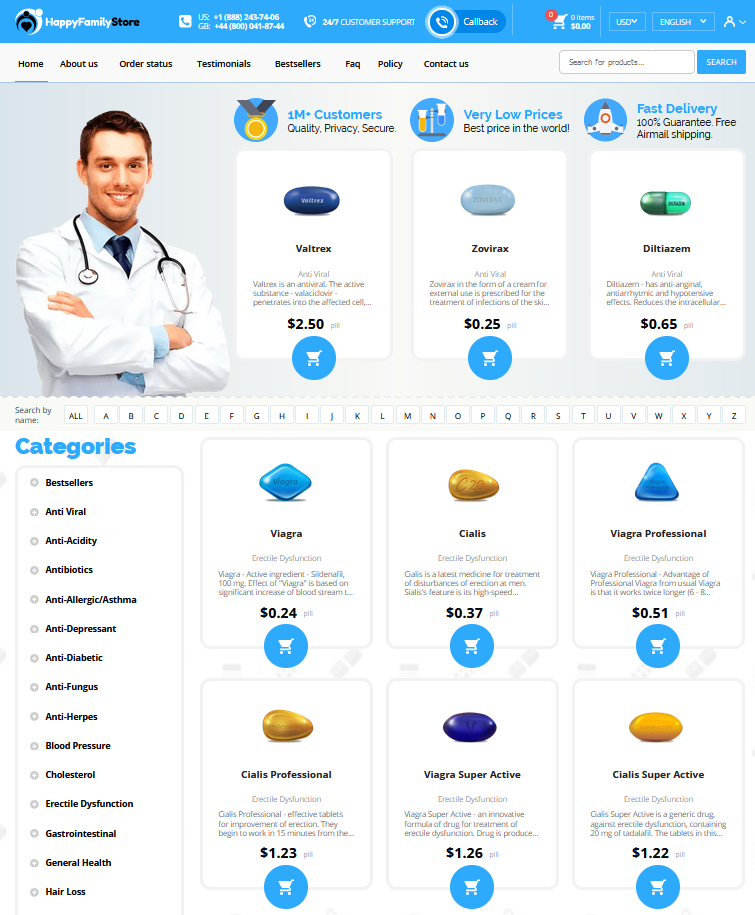To Buy Celexa Online Visit Our Pharmacy ↓

Understanding Celexa: What Is This Medication?
Celexa, known generically as citalopram, is a selective serotonin reuptake inhibitor (SSRI) commonly prescribed to treat depression. By increasing serotonin levels in the brain, Celexa helps enhance mood balance and is essential for individuals struggling with mood disorders. As you're introduced to this medication, it's important to understand its mechanisms and how it can play a pivotal role in improving mental health. Beyond merely popping a pill, taking Celexa marks the beginning of a journey towards emotional well-being.
To further comprehend its potential, consider the following key factors:
```html
| Aspect | Description |
|---|---|
| Mechanism | Boosts serotonin levels in the brain to improve mood |
| Usage | Primarily for depression; can also help with anxiety disorders |
| Key Benefits | Enhances mood stability and emotional regulation |
Understanding Celexa is the cornerstone of its effective use, paving the way for a more personalized and successful treatment journey.
Factors Influencing Celexa Dosage Adjustments

When it comes to tailoring a celexa dosage, understanding patient-specific factors is crucial. Age, liver function, and other medications can all impact how celexa is metabolized in the body. For instance, older adults may require lower doses due to slower drug clearance, while those with liver impairments might also need adjustments to avoid accumulation. Additionally, health professionals consider interactions with other medications the patient may be taking, as these can influence the efficacy and safety of celexa in managing depression.
Stress levels, life changes, and personal response are pivotal in dosage decisions as well. Some individuals metabolize medications faster or slower due to genetic factors, meaning celexa’s effects can vary significantly from one person to another. A dosage too low might be ineffective, whereas too high a dose may increase the risk of side effects. Therefore, healthcare providers aim to strike the right balance, ensuring the dose is neither too potent nor too weak for the individual's needs.
Lifestyle and overall health can subtly influence how celexa performs. For example, a patient’s diet and exercise routine could affect overall wellness and in turn, the medication’s impact. Regular check-ins allow adjustments, ensuring the treatment plan remains effective. Engaging in open conversations with healthcare providers about any changes in lifestyle or mood can help fine-tune the dosage, crafting a truly personalized approach to mental health management.
Initial Dosage: Starting Your Celexa Journey
Embarking on your Celexa journey requires understanding the initial dosage that sets the stage for personalized care. Typically, healthcare providers start patients on a lower dose, often 20 mg per day, allowing the body to adjust gradually. This careful approach helps minimize potential side effects while providing ample time to monitor how the medication influences your symptoms.
During this phase, patience is essential. It may take several weeks before noting significant improvements, as Celexa requires time to build up in your system. Maintaining open communication with your healthcare provider ensures they can accurately assess your response to the medication and adjust the dosage if necessary.
It's vital to adhere strictly to the prescribed dosage and schedule. Abrupt changes can lead to withdrawal symptoms or reduced efficacy. Ensure you’re informed about the medication's expected course and commit to follow-up appointments to track progress effectively.
Monitoring Progress: Tracking Treatment Effectiveness

Regularly monitoring your progress is crucial to ensure Celexa is effectively addressing your needs. Initially, you might notice subtle improvements, like enhanced mood or reduced anxiety, but consistent tracking helps determine if these changes are lasting. Keep a journal to log daily reactions or any symptoms you experience, as this will provide valuable insights over time. Share these records with your healthcare professional during follow-ups, as they offer a clearer picture of your response to the medication. If progress stalls or side effects become troublesome, these insights help tailor your Celexa dosage to maximize benefits. An informed, proactive approach empowers you and your healthcare provider to achieve optimal results.
Side Effects and How to Manage Them
Celexa, an antidepressant, can cause side effects, ranging from mild to more severe. Commonly reported effects include nausea, dry mouth, and drowsiness, which often diminish as your body adjusts. It's critical to remain vigilant and communicate with your healthcare provider about any persistent symptoms.
| Side Effect | Management Tip |
|---|---|
| Nausea | Take with food or adjust meal timing |
| Dry Mouth | Stay hydrated and use sugar-free gum |
| Drowsiness | Consider taking Celexa at bedtime |
Managing these challenges involves proactive strategies tailored to your lifestyle, ensuring you maintain the treatment's effectiveness while minimizing discomfort. Working closely with your healthcare provider, you can adapt your approach, ensuring a balanced journey with Celexa.
Discussing Your Celexa Plan with Healthcare Professionals
When discussing your treatment plan, open a dialogue with your healthcare provider about your specific symptoms and medical history. This conversation is crucial to tailor your dosage effectively. Be prepared to discuss any other medications you're taking, as interactions can affect your plan. Understanding your lifestyle and mental health goals will help clinicians devise a personalized approach.
Regular follow-ups are essential in your therapeutic journey. During these sessions, communicate any side effects or concerns. It allows your healthcare provider to make necessary adjustments to your prescription, optimizing results while minimizing discomfort. This collaborative process ensures a safe and effective treatment experience.
Developing a robust partnership with your healthcare provider can improve the success of your treatment. It's important to stay informed; ask questions about how Celexa works, how long it might take to see results, and any lifestyle considerations. Addressing these topics thoroughly will enhance your comfort and confidence in the process.
Remember, every individual's response to medication can vary significantly. Your healthcare provider is there to support you and provide guidance tailored to your unique needs. This dialogue plays a pivotal role in managing depression effectively, ensuring that both you and your provider are aligned in achieving your health goals.
FDA - Drugs Mayo Clinic - Drugs & Supplements



